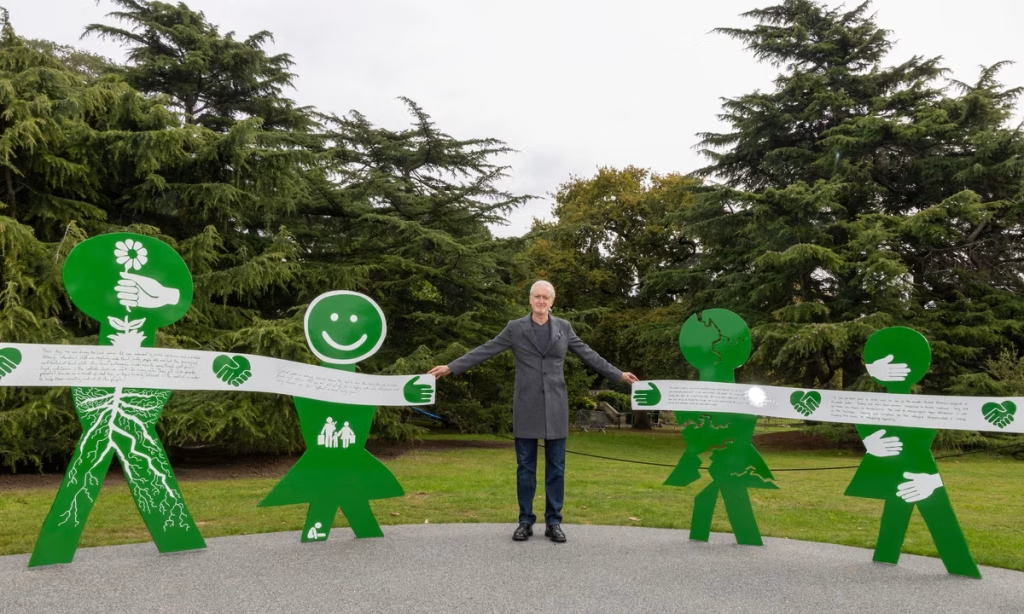The UK artist Michael Landy has this week unveiled his memorial to humanitarian aid workers, which has been in development for over a decade. The new public art piece, which is located at Gunnersbury Park Museum in west London, is intended to commemorate all humanitarians who have been killed in service, of whatever nationality.
Landy’s work is comprised of a circle of 15 human-scale figures, grouped in fives, with spaces allowing visitors to complete the circle. Each figure is inscribed with text, provided by organisations such as Oxfam and Save the Children, relaying the stories of individuals involved with humanitarian assistance.
The Humanitarian Memorial Committee, the group of prominent UK-based humanitarians behind the work, first discussed the “vision of creating a lasting tribute to aid workers” in 2015. John Holmes, the chair of the committee, said at the unveiling yesterday (1 October) that the launch “marks the conclusion of a long journey to make the memorial a reality”.
The event was attended by representatives from Islamic Relief and Médecins Sans Frontières, both of which provide critical support around the world. In 2024, 383 aid workers were killed in 27 countries, with almost half of this number killed in Gaza.
The commission of Landy’s work was overseen by the consultancy arm of the charity Contemporary Art Society (CAS). The charity’s director, Caroline Douglas, says that the organisation compiled a shortlist of artists, before consulting with humanitarians on a final decision. The memorial committee then raised the funds to realise the piece, although the final cost is undisclosed.
According to Jordan Kaplan, a senior art producer at CAS, choosing the right site for the work was an important factor. “One of the tenets of humanitarianism is neutrality; this site is part of a public park and offers a level of access that many other sites didn’t,” she says.
Discussing the work, which will enter the collection of the museum of Gunnersbury Park, forming part of its education and outreach programme, Landy says: “Memorials have a dual purpose; to remember people but also to celebrate the best of us.
“It is a contemporary memorial so we don’t want people to be offended by it… There are so many different types of memorial; I’m interested in the participatory part [of a memorial].”
The artist explains that the memorial committee especially liked his previous work, Acts of Kindness (2011-12). For this piece, Landy invited passengers and staff on the London Underground to share stories celebrating compassion and generosity.
However, Landy is known for Break Down (2001), a dramatic performance work which involved pulverising all of his worldly possessions—from a Saab 900 car to a single tea bag—leaving nothing but the clothes he was standing in. This epic act of destruction took place in the former C&A department store on Oxford Street in London.
